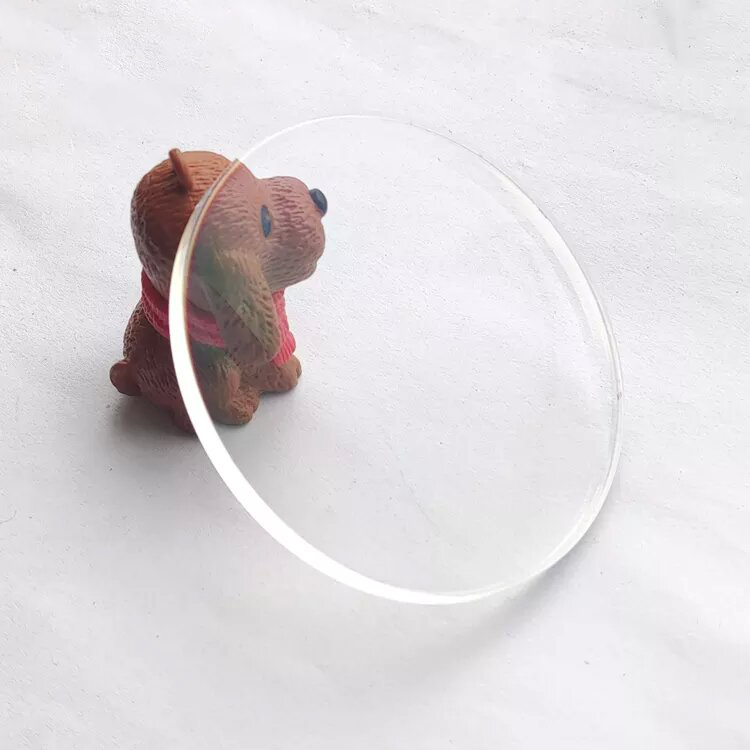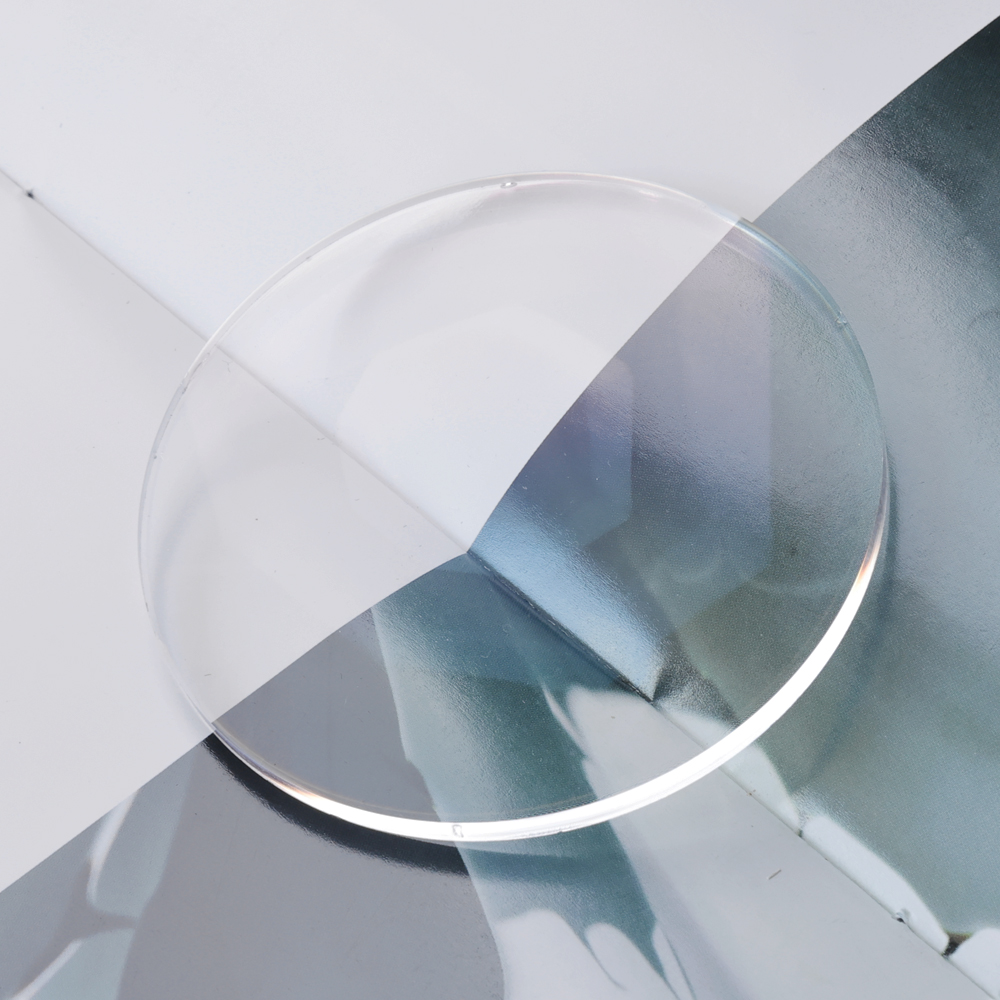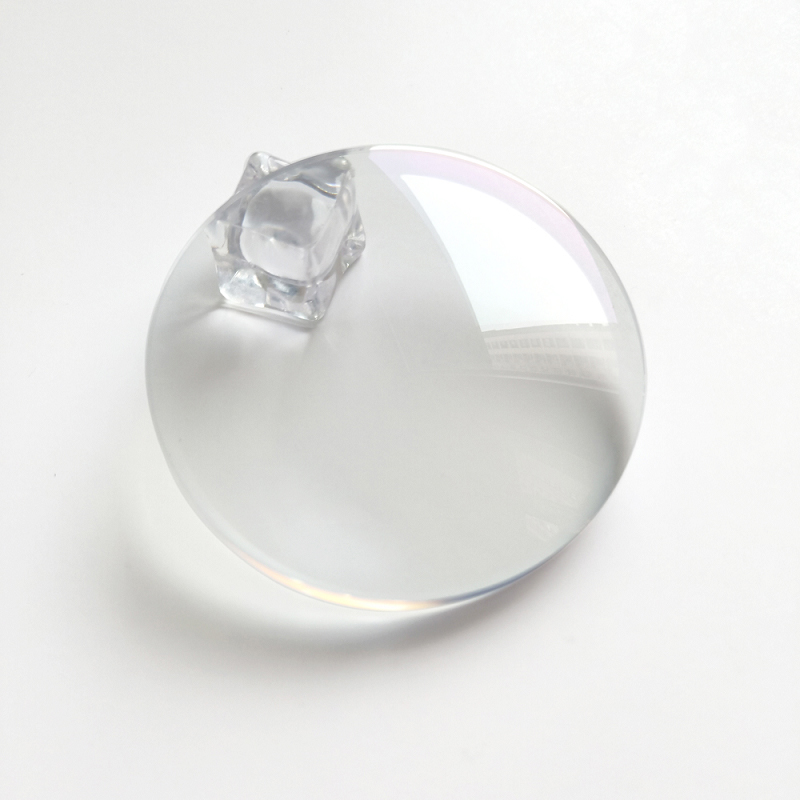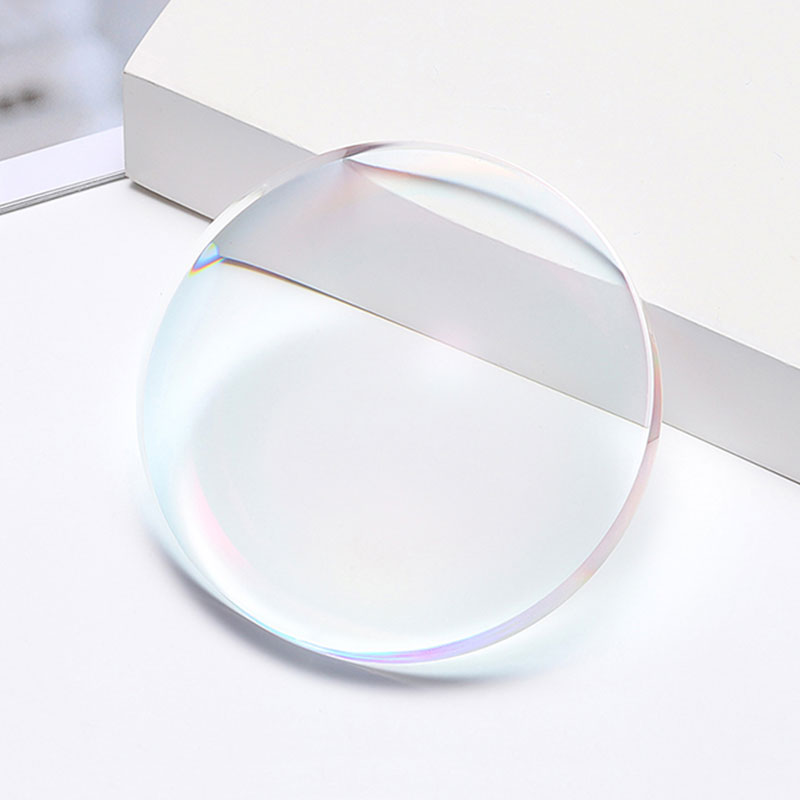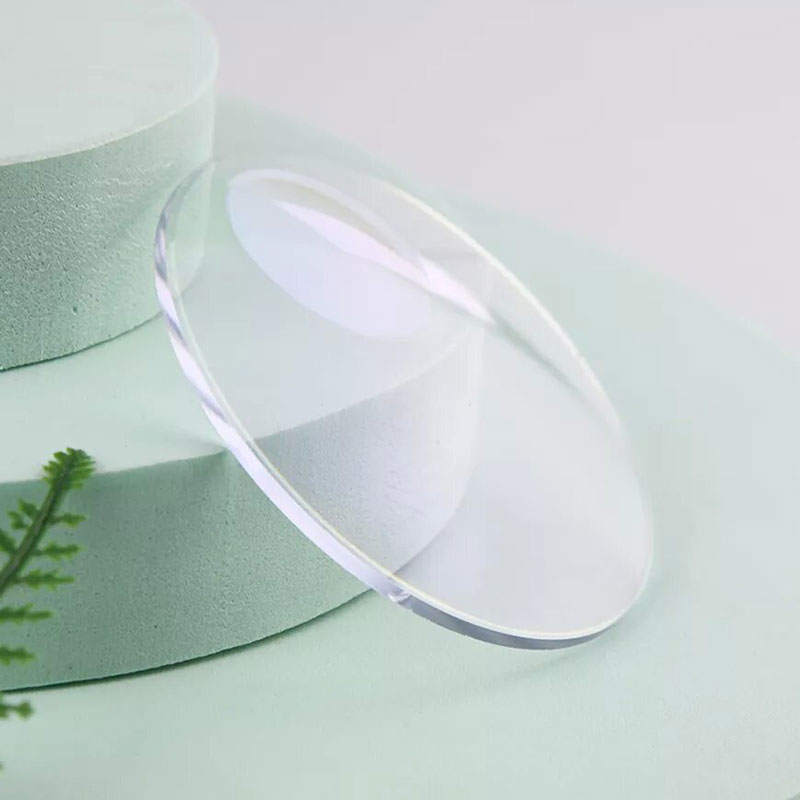1. Purpose and Functionality of Single Vision Lenses vs. Multifocal Lenses
When it comes to corrective lenses, the primary distinction lies in the purpose they serve. Single vision lenses and multifocal lenses are two types of lenses designed to correct vision problems, but they serve very different needs. Understanding their purpose and functionality is key when choosing the right type of lenses for your vision correction.
Single Vision Lenses: Correcting One Distance at a Time
Single vision lenses are among the most commonly prescribed types of lenses. As the name suggests, these lenses are designed to correct vision at one specific focal distance, making them ideal for people who need correction for either near vision, intermediate vision, or distance vision.
1.1 Types of Vision Conditions Corrected by Single Vision Lenses
Single vision lenses are primarily used to correct refractive errors, such as:
-
Nearsightedness (Myopia): For people who can see objects clearly up close but have difficulty seeing distant objects. Single vision lenses for myopia will focus the light entering the eye in such a way that distant objects become clearer.
-
Farsightedness (Hyperopia): For individuals who have trouble seeing objects close to them but can see distant objects clearly. In this case, single vision lenses help focus light correctly for near vision, improving clarity when reading or using a smartphone.
-
Astigmatism: Astigmatism is caused by an irregularly shaped cornea or lens, leading to blurred or distorted vision at all distances. Single vision lenses for astigmatism can correct the shape of the light entering the eye, improving overall vision clarity.
1.2 Advantages of Single Vision Lenses
- Simple Design: Single vision lenses have the same prescription across the entire lens, making them easier to manufacture and more affordable compared to multifocal lenses.
- Clear Vision at One Distance: These lenses excel at correcting vision for one specific distance, making them ideal for people who only need glasses for reading, driving, or working on a computer.
- Ease of Use: They require little to no adjustment since the lens is designed for a single function.
Multifocal Lenses: Correcting Multiple Distances
Unlike single vision lenses, multifocal lenses are designed to correct vision for multiple distances. These lenses have multiple focal points, making them suitable for individuals who need help with both near and distance vision. There are two common types of multifocal lenses: bifocals and progressive lenses.
2.1 Bifocals: Two Focal Points
Bifocal lenses are the simplest form of multifocal lenses. They contain two distinct focal areas:
- Top Section: For distance vision (ideal for seeing far-away objects, like when driving or watching TV).
- Bottom Section: For near vision (used for tasks like reading or working on a computer).
The two prescriptions are separated by a visible line, which makes bifocals easy to identify.
2.2 Progressive Lenses: Smooth Transition Between Multiple Prescriptions
Progressive lenses are a more advanced form of multifocal lenses. Unlike bifocals, they don’t have a visible line dividing the lens into sections. Instead, they offer a gradual transition from one prescription to the next, allowing for clearer vision at various distances without a noticeable boundary. The progression from near to intermediate to far vision is smooth, making them visually more appealing and functional for most users.
Progressive lenses typically offer three main focal zones:
- Distance Zone: At the top of the lens, ideal for looking at far-away objects.
- Intermediate Zone: For tasks such as working on a computer or seeing objects at arm’s length.
- Near Zone: At the bottom of the lens, used for reading and close-up tasks.
2.3 Advantages of Multifocal Lenses
- One Pair of Glasses for All Tasks: Multifocal lenses eliminate the need for multiple pairs of glasses, as they allow users to switch between different vision needs seamlessly.
- Convenience: Progressive lenses, in particular, are ideal for people who need to transition between various activities (like reading, using a computer, and driving) without having to change glasses.
- Aesthetic Appeal: Progressive lenses provide a more natural appearance compared to bifocals, which have a noticeable line.
Key Differences Between Single Vision and Multifocal Lenses
To help further compare the two types of lenses, the table below outlines some of the key differences in terms of their functionality and design:
| Feature | Single Vision Lenses | Multifocal Lenses |
|---|---|---|
| Focal Points | One – For either near, intermediate, or far vision | Multiple – Near, intermediate, and far vision |
| Design | Simple, uniform prescription throughout the lens | Multiple zones with gradual or distinct transitions |
| Usage | Suitable for one specific visual task (e.g., reading or distance) | Ideal for people needing vision correction for all distances |
| Types | Myopia, hyperopia, and astigmatism correction | Bifocals and progressive lenses for presbyopia |
| Visual Adjustment | Easy to adjust to, no transition required | May require adaptation due to the transition between zones |
| Aesthetic | Clean, no visible lines or sections | Bifocals have visible lines, while progressives have no lines |
| Cost | Generally more affordable | More expensive due to complex design and multiple prescriptions |
2. Visual Correction Range of Single Vision Lenses vs. Multifocal Lenses
When it comes to choosing eyeglass lenses, one of the most important factors to consider is the visual correction range—that is, the range of distances at which a lens can provide clear vision. This feature plays a major role in determining whether single vision lenses or multifocal lenses are the better option for your needs.
Single Vision Lenses: Correction for One Distance
Single vision lenses are designed to correct vision for only one specific distance. These lenses are commonly used by individuals who experience problems focusing on either near or far objects but not both. As such, single vision lenses are perfect for people who need help with a single visual task, such as reading, seeing objects at a distance, or viewing intermediate distances like a computer screen.
2.1 Types of Visual Tasks Corrected by Single Vision Lenses
Single vision lenses can be tailored to meet different visual needs based on the distance at which you struggle to see clearly. The three primary visual tasks that single vision lenses address include:
-
Near Vision: Used primarily for tasks that require seeing objects up close, such as reading, knitting, or using a smartphone. If you have farsightedness (hyperopia), where distant objects are clearer than nearby objects, single vision lenses designed for near vision would correct that issue.
-
Intermediate Vision: This range is typically associated with tasks such as using a computer or viewing objects at arm’s length. If you have difficulty seeing at intermediate distances, like reading text on a computer screen, you can opt for single vision lenses specifically designed to correct that distance.
-
Distance Vision: For people who have trouble seeing faraway objects (a common issue with nearsightedness or myopia), single vision lenses are designed to improve distant vision. These lenses focus light directly onto the retina, allowing objects in the distance, like road signs or faces across a room, to become clearer.
2.2 Benefits of Single Vision Lenses for Specific Tasks
- Simpler Design: Since single vision lenses correct for only one specific distance, they are easier to manufacture and generally more affordable than multifocal lenses.
- No Adjustments Needed: Once prescribed for a particular visual task, users can adapt to single vision lenses quickly, as they are straightforward with no need for transitioning between different focal points.
- Effective for Specific Needs: Whether you need them for reading, driving, or computer work, single vision lenses are highly effective for a single, focused use case.
Multifocal Lenses: Correcting Multiple Distances Simultaneously
Multifocal lenses, unlike single vision lenses, are designed to address multiple vision issues simultaneously. They provide a range of focal points within a single lens, allowing the wearer to see clearly at multiple distances—near, intermediate, and far—without needing to switch glasses.
Multifocal lenses are ideal for individuals who have age-related vision changes, such as presbyopia, where the eyes lose the ability to focus on close objects. These lenses combine the benefits of near, intermediate, and distance vision correction in one pair, making them highly convenient for people who need clear vision for various tasks throughout the day.
2.3 Types of Multifocal Lenses
There are two main types of multifocal lenses that are commonly used to correct vision across different distances:
-
Bifocal Lenses: These lenses contain two distinct focal areas. The top portion is typically used for distance vision, while the bottom portion is designed for near vision (reading, for example). While bifocals offer a quick solution to vision correction for multiple distances, they do have a visible line separating the two focal points, which some people find distracting.
-
Progressive Lenses: Also known as no-line bifocals, progressive lenses offer a seamless transition between multiple focal points, including near, intermediate, and distance vision. This type of lens is more aesthetically pleasing than bifocals, as there are no visible lines or divisions between the different focal areas. Progressives are more advanced than bifocals and are often preferred for their smooth transition between distances.
2.4 Advantages of Multifocal Lenses
- One Pair of Glasses for All Tasks: Multifocal lenses eliminate the need for multiple pairs of glasses, as they can correct vision at all distances. This is particularly beneficial for people who frequently switch between tasks, such as reading, working on a computer, and driving.
- Convenience: Rather than needing to carry multiple pairs of glasses for different tasks, multifocal lenses allow users to enjoy clear vision at all distances in a single, convenient pair.
- No Need for Constant Adjustment: With progressive lenses, for example, the gradual transition between near, intermediate, and far vision zones allows for a more natural visual experience. There’s no need to shift between different pairs of glasses throughout the day.
Key Differences in Visual Correction Range
To help illustrate how single vision lenses and multifocal lenses differ in terms of their visual correction range, the following table summarizes the key differences between the two:
| Feature | Single Vision Lenses | Multifocal Lenses |
|---|---|---|
| Visual Range | One – Corrects vision for near, intermediate, or distance only | Multiple – Corrects near, intermediate, and distance vision |
| Design | Simple, uniform prescription across the entire lens | Multiple focal points, with distinct or gradual transitions between them |
| Best For | Specific tasks (e.g., reading, driving, computer work) | People needing vision correction for multiple distances (e.g., presbyopia) |
| Transition Between Tasks | Requires changing glasses for different distances | Seamless transition between near, intermediate, and distance vision |
| Visual Clarity | Clear vision at one distance | Clear vision across multiple distances without switching glasses |
| Convenience | Requires multiple pairs of glasses for different tasks | One pair of glasses for all tasks, eliminating the need to switch |
3.Lens Design
Lenses are one of the most important components of eyewear, and their design plays a critical role in ensuring comfort, clarity, and visual performance. Different types of lenses are designed to address various visual needs, and these can range from simple, single-vision lenses to more complex multifocal lenses.
Single Vision Lenses
Single vision lenses are the most common and simplest type of lens design. As the name suggests, single vision lenses provide a uniform prescription across the entire lens, meaning that the lens has the same power from top to bottom and side to side. These lenses are designed to correct one specific vision problem, whether it is nearsightedness (myopia), farsightedness (hyperopia), or astigmatism.
Construction and Manufacturing
The design of single vision lenses is relatively straightforward. The lens is manufactured with a single curvature that matches the prescription required to correct the wearer’s vision. This simple design makes single vision lenses easier to produce and, therefore, more affordable than more complex lens types.
Manufacturing Process:
- Lens Material Selection: The first step in manufacturing single vision lenses is choosing the appropriate material, which could be plastic, polycarbonate, or high-index materials, depending on the needs of the wearer.
- Prescription Matching: The optical prescription (which is a combination of sphere, cylinder, and axis) is then matched to the lens curvature. This curvature is uniform across the entire lens.
- Cutting and Shaping: The lens is then cut and shaped according to the frame’s specifications. This step involves creating the correct curvature and ensuring that the lens fits properly into the chosen frame.
- Coating: A final protective coating is added to the lens to reduce glare, increase scratch resistance, or add anti-reflective properties.
Benefits of Single Vision Lenses
- Simple Design: The lack of any gradient or multi-prescription zones makes these lenses straightforward to wear and easy to adapt to.
- Affordability: Because of the simple design and manufacturing process, single vision lenses are typically less expensive than multifocal options.
- Comfort: Since there is only one prescription across the entire lens, wearers do not need to adjust to multiple focal points, making these lenses comfortable for daily use.
Multifocal Lenses
Multifocal lenses, on the other hand, are more complex and are designed for individuals who require correction for both near and distant vision. There are two main types of multifocal lenses: bifocals and progressive lenses. Both types have their own advantages and design characteristics, and their choice depends on the specific visual needs of the wearer.
Bifocal Lenses
Bifocal lenses feature two distinct prescription zones: one for near vision and one for distance vision. These lenses are typically divided by a visible line, with the upper portion of the lens correcting for distance vision and the lower portion correcting for near vision.
The main feature of bifocal lenses is the visible line that separates the two prescription areas. While this line is often a hallmark of bifocal lenses, it can also be a source of discomfort for some wearers who find the transition between zones to be jarring. However, bifocals are effective in providing sharp vision at both distances.
Construction of Bifocal Lenses
- Lens Division: Bifocal lenses are created by combining two lens segments of different powers. The upper portion of the lens is designed for distance vision, while the lower segment caters to near vision.
- Visible Line: The distinct line that divides the two segments is usually located approximately halfway down the lens.
- Materials and Coatings: As with single vision lenses, bifocals are made from materials like plastic or polycarbonate and can be coated for added protection against glare, scratches, and UV rays.
Progressive Lenses
Progressive lenses, also known as “no-line bifocals,” are designed with a seamless transition between multiple prescription zones. These lenses gradually change in power from the top (distance vision) to the bottom (near vision), providing wearers with clear vision at all distances without the visible line that is characteristic of bifocals.
Progressive lenses are often preferred by those who do not want the aesthetic of a bifocal lens with a visible line. However, due to their gradual transition, they require a period of adaptation, and some users may experience initial discomfort as they adjust to the different focal lengths.
Construction of Progressive Lenses
- Continuous Prescription Zones: The most significant feature of progressive lenses is the absence of a visible line. The lens has a smooth, gradual transition between multiple focal points, which allows for clear vision at both near and far distances, as well as intermediate distances (such as computer use).
- Customizable Designs: Progressive lenses can be customized based on the wearer’s specific needs, with different designs offering varying transition lengths and focal zones.
- Advanced Technology: Progressive lenses are often made with advanced technologies that ensure a smooth transition between prescriptions and minimize distortion. Some manufacturers also incorporate adaptive coatings to further enhance visual clarity and comfort.
Comparison of Single Vision and Multifocal Lenses
Below is a comparison table that highlights the differences between single vision lenses and multifocal lenses:
| Feature | Single Vision Lenses | Multifocal Lenses |
|---|---|---|
| Prescription Type | Corrects a single vision issue (near or far). | Corrects multiple vision issues (near, far, intermediate). |
| Lens Structure | Uniform curvature across the lens. | Multiple zones with either a visible line (bifocal) or smooth transition (progressive). |
| Comfort | Simple and easy to adapt to. | May require an adaptation period, especially with progressives. |
| Visual Range | Provides clear vision at only one distance. | Provides clear vision at near, far, and intermediate distances. |
| Aesthetic | Sleek and simple design. | Bifocals have a visible line, while progressives are line-free but may cause slight distortion at the edges. |
| Cost | Generally more affordable. | More expensive due to the complexity of design and manufacturing. |
4. Comfort and Adaptation
When it comes to choosing between single vision lenses and multifocal lenses, comfort and adaptation are two crucial factors that can greatly impact the user’s experience. While both types of lenses serve different purposes, they come with varying levels of comfort and ease of adaptation.
Single Vision Lenses: Easier to Adjust to
Single vision lenses are designed to correct one specific type of vision problem, such as nearsightedness (myopia), farsightedness (hyperopia), or astigmatism. These lenses are often prescribed to people who only need correction for a single focal point, making them relatively simple to use.
No Transition Zone or Multiple Focal Points
One of the main advantages of single vision lenses is that they do not have any transition zones or multiple focal points. This means that users experience a more straightforward and consistent visual experience. Whether they are focusing on a book or a distant object, the lenses provide a single, clear view. This simplicity makes it easier for individuals to adapt to their new lenses quickly. There’s no need to get used to shifting focus between near and far distances, which can often cause discomfort or a sense of distortion.
Immediate Clarity and Comfort
Because single vision lenses have a uniform prescription across the entire lens, users can generally experience clearer vision almost immediately after wearing them. There’s no need to undergo a lengthy adaptation period like those required with multifocal lenses. If you have a specific task in mind—like reading, using a computer, or driving—single vision lenses offer a more precise and comfortable solution. For many people, the ease of use makes them the preferred choice for daily activities that require a constant level of visual clarity.
Ideal for Specific Tasks
If you only need correction for a particular activity, single vision lenses can be the ideal option. For instance, individuals with presbyopia, who may only need help reading up close, can opt for single vision reading glasses instead of multifocal lenses. This focused correction ensures that you are not overwhelmed with the challenges of managing multiple prescriptions at once, making single vision lenses a convenient and comfortable choice.
Multifocal Lenses: Adaptation Challenges
Multifocal lenses, such as bifocals and progressives, combine multiple prescriptions into one pair of glasses. These lenses are designed to provide users with the ability to see clearly at different distances—near, intermediate, and far. While multifocal lenses offer the convenience of having all focal points in one pair of glasses, they may take some time to adjust to.
Transition Between Focal Points
The biggest challenge with multifocal lenses is the transition between different focal points. For example, with bifocal lenses, there’s a distinct line that separates the near vision and distance vision areas. For progressive lenses, the transition is smoother but can still be noticeable as users shift their gaze from one area of the lens to another. These transitions can cause discomfort, including a sensation of “swimming” or “distortion” when looking through different parts of the lens. Some users may feel disoriented as their eyes adjust to these subtle changes in focal length.
A Period of Adjustment
It is common for individuals to experience a brief period of discomfort when first wearing multifocal lenses. The brain needs time to adapt to the new visual information it is receiving from different zones of the lens. This adjustment period can vary from a few days to a few weeks, depending on the user’s sensitivity and how quickly their eyes can adapt to the lens design.
While the transition between focal points may be uncomfortable initially, the long-term benefit is the convenience of not needing multiple pairs of glasses. Once adaptation is complete, users often report that multifocal lenses provide a natural, seamless way to see at various distances without needing to switch between different pairs of glasses.
Distortion and Peripheral Vision
Some individuals may experience peripheral distortion, particularly with progressive lenses. Since the lens curves to accommodate multiple prescriptions, the outer edges can cause visual distortions that make objects appear blurry or warped. This is particularly true when looking out of the peripheral areas of the lens. Over time, as users adjust, this distortion often becomes less noticeable, but it can be a source of discomfort during the early stages of use.
Key Differences Between Single Vision and Multifocal Lenses
The table below outlines the key differences in comfort and adaptation between single vision lenses and multifocal lenses.
| Feature | Single Vision Lenses | Multifocal Lenses |
|---|---|---|
| Type of Vision Correction | One prescription for a single distance (near or far) | Multiple prescriptions (near, intermediate, far) in one lens |
| Adjustment Period | Minimal or no adjustment needed | Longer adjustment period required |
| Comfort | Generally more comfortable; clearer vision for a single task | Initial discomfort and possible distortion due to multiple focal points |
| Visual Clarity | Clear vision without the need to adjust focus | Clear vision at multiple distances, but with potential distortion at the edges of the lens |
| Ease of Use | Simple to use for specific tasks like reading or driving | Requires practice to adjust to the transitions between focal points |
| Ideal For | Users needing correction for a single distance | Users needing correction for both near and far vision |
5.Aesthetic Appeal of Vision Lenses
When choosing the right lenses for eyewear, aesthetics can play a significant role in the decision-making process. While the functionality of lenses is undoubtedly essential, many individuals also consider the visual appeal of their glasses. The aesthetic characteristics of lenses can affect not only the appearance of the glasses but also the overall perception of the wearer.
Single Vision Lenses: Clean and Simple
Single vision lenses are designed to correct a single vision issue, whether it’s nearsightedness, farsightedness, or astigmatism. These lenses offer a straightforward solution, and their aesthetic appeal lies in their simplicity. Unlike multifocal lenses, single vision lenses are uniformly focused throughout the entire lens. There are no lines, sections, or any visible divisions, which results in a clean, smooth appearance.
No Visible Lines
One of the key aesthetic advantages of single vision lenses is their lack of visible lines. This feature allows the glasses to maintain a more minimalist and modern look, making them ideal for individuals who prefer a subtle, unobtrusive style. In a world where simplicity is often favored, the smooth surface of single vision lenses is highly appealing, especially for those who wear glasses full-time.
Versatility in Frame Choices
Single vision lenses are highly versatile when it comes to selecting frames. Because they don’t require multiple optical zones or lines, these lenses can fit into virtually any frame style without compromising the overall look. Whether you prefer large, bold frames or smaller, more delicate ones, single vision lenses can adapt to the design seamlessly.
Additionally, because there are no lines or noticeable transitions in the lenses, the focus is placed entirely on the frame and how it complements the face. This makes single vision lenses particularly attractive to individuals who want their eyewear to enhance their features without drawing unnecessary attention to the lenses themselves.
Multifocal Lenses: A Blend of Functionality and Aesthetics
Multifocal lenses, including bifocal and progressive lenses, combine multiple prescriptions into one lens to address more than one vision problem. While these lenses provide functional advantages, their aesthetic appeal can vary depending on the type.
Bifocals: The Classic with a Line
Bifocal lenses are among the most well-known types of multifocal lenses. These lenses contain two distinct sections: one for near vision and another for distance vision. The most noticeable characteristic of bifocals is the visible line that separates these two zones.
For some, the visible line may be a deterrent, as it can give the glasses a somewhat dated or traditional appearance. However, bifocals also have their own charm, especially for those who appreciate a more vintage style or those who are accustomed to the practicality of the lenses. The defined separation of the near and distance vision zones can sometimes give off a distinct, purposeful aesthetic, though it may not be as sleek or modern as other options.
Progressive Lenses: Seamlessly Smooth
Progressive lenses offer a more modern solution to multifocal vision correction. Unlike bifocals, progressive lenses do not have a visible line separating the different vision zones. Instead, they provide a gradual transition from one focal length to another, creating a smooth, uninterrupted surface. This seamless appearance makes progressive lenses aesthetically pleasing for many wearers.
The lack of visible lines is a significant advantage for individuals who want their glasses to look as natural as possible. This smooth design makes progressive lenses particularly appealing to those who desire a more youthful or sophisticated look, without the visible divide associated with bifocals.
While progressive lenses may look more streamlined and contemporary, they can also come with a few aesthetic considerations. The edges of the lens, especially for individuals with a significant prescription, may appear thicker at the top or bottom. However, this is a trade-off for the convenience and versatility of the lens.
Comparison of Aesthetic Appeal: Single Vision vs. Multifocal Lenses
To better understand the aesthetic differences between single vision and multifocal lenses, the table below provides a comparison based on several key factors:
| Aspect | Single Vision Lenses | Bifocal Lenses | Progressive Lenses |
|---|---|---|---|
| Appearance | Simple, clean, no lines | Visible line separating zones | Seamless transition, no lines |
| Frame Compatibility | Highly versatile, suits any frame type | May be more limiting in frame style | Can be adapted to most frames |
| Preferred Look | Minimalist, modern, subtle | Traditional, classic, vintage look | Sleek, youthful, sophisticated |
| Practical Considerations | Best for single vision issues only | Good for those needing two focal points | Ideal for those requiring multiple prescriptions without lines |
| Perceived Age | Suitable for all ages | Often associated with older age | Appears younger, more modern |
6. Price
When it comes to the cost of eyeglass lenses, the price can vary significantly depending on the type of lens chosen. While both single vision and multifocal lenses serve essential functions, the complexity and design of each lens play a crucial role in determining their respective prices.
Single Vision Lenses
Single vision lenses are the most basic type of lenses used in eyeglasses. They are designed to correct a single vision problem, whether that is nearsightedness (myopia), farsightedness (hyperopia), or astigmatism. The simplicity of single vision lenses is one of the key factors that make them more affordable compared to other types of lenses.
Affordability and Simplicity
The primary reason for the lower cost of single vision lenses is their simpler design. They have a uniform curvature across the entire lens surface, meaning that there is only one prescription across the entire lens. The lens does not need to accommodate multiple prescriptions or require sophisticated technology to allow smooth transitions between different focal points. Because of this straightforward design, the manufacturing process is less complex, leading to a more affordable price tag.
Additionally, single vision lenses are commonly available in a wide range of materials, such as standard plastic or polycarbonate, both of which are relatively inexpensive to produce. The ability to choose from various materials and coatings also allows customers to tailor their glasses without significantly increasing the price.
Lens Coatings and Customizations
While the basic lens itself is affordable, additional features like anti-reflective coatings, UV protection, and scratch-resistant coatings can add to the cost. However, even with these enhancements, single vision lenses remain relatively budget-friendly compared to multifocal lenses.
Price Range for Single Vision Lenses
In general, single vision lenses can range in price from around $50 to $200, depending on the material, coatings, and customization options selected. For example, a basic plastic lens with no coatings may be as inexpensive as $50, whereas a high-index lens with multiple coatings could cost closer to $200.
Multifocal Lenses
Multifocal lenses, including bifocal and progressive lenses, are designed to correct more than one vision problem, typically near and far vision. These lenses are much more complex in design because they require multiple focal points or “zones” that seamlessly transition from one to another. This complexity is the primary reason that multifocal lenses tend to be more expensive than single vision lenses.
Complexity of Design and Prescription Zones
Bifocal lenses have two distinct zones: one for distance vision at the top of the lens and one for near vision at the bottom. The line between the two zones is visible, and the wearer must adjust their gaze to switch between the two focal points.
On the other hand, progressive lenses are “line-free” multifocal lenses that offer a smooth transition between different focal points without any visible lines. These lenses are designed to provide clear vision at all distances: near, intermediate, and far. The absence of visible lines in progressive lenses requires advanced manufacturing techniques, which make these lenses more expensive than bifocals.
Higher Manufacturing Costs
The process of creating multifocal lenses involves precise calculations and specialized technology. Progressive lenses, in particular, require intricate design adjustments to ensure that the transition between the different focal zones is smooth and comfortable for the wearer. This added precision and technology increases the manufacturing cost significantly compared to the straightforward design of single vision lenses.
Materials used for multifocal lenses are often more expensive. High-index lenses, which are thinner and lighter than standard lenses, are commonly used in multifocal lenses to reduce thickness and improve comfort. These materials cost more to produce, which contributes to the higher price.
Price Range for Multifocal Lenses
Multifocal lenses tend to cost significantly more than single vision lenses, with prices typically ranging from $150 to $800 or more, depending on the type of lens and additional features.
- Bifocal lenses typically cost between $150 and $300, depending on the materials and coatings.
- Progressive lenses can be priced anywhere from $200 to $800, with higher-end progressive lenses offering enhanced comfort and wider viewing areas.
Factors Affecting the Price of Multifocal Lenses
There are several factors that can influence the price of multifocal lenses:
- Lens Type: As mentioned earlier, progressive lenses are generally more expensive than bifocals because of their complex design.
- Material: High-index lenses, which are thinner and lighter, can increase the price of multifocal lenses.
- Coatings and Customizations: Similar to single vision lenses, multifocal lenses can also be customized with additional coatings, such as anti-scratch, anti-reflective, or UV protection. These features add to the overall cost.
- Brand and Retailer: Some high-end brands or retailers may charge a premium for their lenses, contributing to a higher price.
7.Who Needs Them?
When it comes to vision correction, choosing the right type of lenses is essential. The two most common types of lenses prescribed by optometrists are single vision lenses and multifocal lenses. Each of these lenses serves a different purpose and is suitable for different individuals based on their age, vision needs, and overall eye health.
Single Vision Lenses
Single vision lenses are designed to correct one type of vision problem. This type of lens is typically prescribed to individuals who have a single, specific vision concern, such as difficulty seeing clearly at a distance or difficulty reading close-up text. People who only need one type of correction—either nearsightedness (myopia) or farsightedness (hyperopia)—often benefit from single vision lenses.
Who Needs Single Vision Lenses?
Single vision lenses are ideal for younger individuals or those who have not yet developed presbyopia, a condition related to aging that affects the ability to focus on near objects. Here’s a breakdown of who typically needs single vision lenses:
-
Young Adults: Many younger adults, especially those under 40, may only experience nearsightedness (myopia) or farsightedness (hyperopia), which can usually be corrected with single vision lenses. People in this group typically do not need reading glasses or multifocal lenses.
-
People with One Primary Vision Issue: Single vision lenses are suitable for individuals who only experience one primary vision problem, such as difficulty seeing objects far away (myopia) or difficulty seeing things up close (hyperopia). These lenses provide clear vision in one range, either distance or near.
-
People Who Do Not Need Multifocal Lenses Yet: For those who are not yet experiencing presbyopia, single vision lenses provide sufficient correction. As people age, however, they may eventually need multifocal lenses, but younger adults or those without signs of presbyopia can benefit from single vision lenses for many years.
Advantages of Single Vision Lenses
- Simplicity: These lenses are simpler than multifocal lenses, making them easier to adapt to.
- Affordable: Since single vision lenses only correct one type of vision issue, they tend to be more affordable compared to multifocal lenses.
- Widely Available: Single vision lenses are the most commonly prescribed lenses, making them easy to find and customize according to the user’s needs.
Multifocal Lenses
Multifocal lenses are designed to help individuals who experience presbyopia, a condition that typically occurs after the age of 40, where the eye’s natural lens loses its ability to focus on nearby objects. Presbyopia affects most people as they get older, and multifocal lenses can help them see clearly at all distances—near, intermediate, and far. These lenses provide a gradual change in focus from the top of the lens (for distance vision) to the bottom (for near vision), offering a seamless transition between different focal points.
Who Needs Multifocal Lenses?
Multifocal lenses are ideal for individuals who are presbyopic or are experiencing difficulty focusing on near objects due to aging. However, they are also suitable for people who need correction for both distance and near vision at the same time. Here’s a breakdown of who benefits most from multifocal lenses:
-
Presbyopic Individuals (Typically Over 40): Most people experience presbyopia as they age, usually after the age of 40. If you notice difficulty reading small print or seeing close-up objects clearly, multifocal lenses may be the ideal solution.
-
People with Combined Vision Problems: If you have both nearsightedness (myopia) or farsightedness (hyperopia) and also struggle with seeing things close up, multifocal lenses allow you to correct both problems in one pair of glasses.
-
People Who Do Not Want to Use Multiple Pairs of Glasses: If you are tired of switching between reading glasses and distance glasses, multifocal lenses can eliminate this inconvenience by providing a single pair that corrects all your vision needs.
Types of Multifocal Lenses
There are different types of multifocal lenses, each catering to varying preferences and visual needs:
- Bifocal Lenses: These lenses have two distinct optical powers, one for near vision and one for distance vision. They have a visible line dividing the two zones.
- Trifocal Lenses: Trifocals offer three different optical powers: one for distance, one for intermediate (like computer work), and one for near vision. These lenses also have lines that separate the different focal areas.
- Progressive Lenses: Progressive lenses offer a smooth transition from distance vision to near vision, with no visible lines. They are often preferred by people who want a more natural experience without the visible lines in bifocals or trifocals.
Advantages of Multifocal Lenses
- All-in-One Solution: Multifocal lenses allow people to see at various distances without needing multiple pairs of glasses.
- More Natural Vision: Progressive lenses, in particular, provide a seamless transition between different focal points, giving users a more natural visual experience.
- Convenience: With multifocal lenses, you no longer need to carry multiple pairs of glasses for different tasks, making them convenient for those who lead active lifestyles.
Comparison of Single Vision and Multifocal Lenses
Here’s a quick comparison of the two lens types:
| Feature | Single Vision Lenses | Multifocal Lenses |
|---|---|---|
| Best For | One primary vision issue | People with presbyopia or multiple vision issues |
| Age Group | Typically younger, under 40 | Typically over 40, presbyopic individuals |
| Vision Range | One range (distance or near) | Multiple ranges (distance, intermediate, near) |
| Lens Types | Only one prescription in the lens | Bifocal, trifocal, progressive |
| Adaptation Time | Easy to adapt to | Takes time to adjust, especially with progressives |
| Cost | Generally more affordable | More expensive due to complexity |
8.Visual Experience: Single Vision vs. Multifocal Lenses
When it comes to choosing the right type of eyeglasses, one of the key considerations is the visual experience. The type of lenses you select will directly impact your ability to see clearly at various distances, as well as how comfortable and natural your vision feels during everyday activities. Broadly speaking, there are two main categories of lenses: Single Vision Lenses and Multifocal Lenses.
Single Vision Lenses: Focused on One Distance
Single vision lenses are designed to provide a uniform focal length, meaning they have only one prescription for a specific distance. This makes them an excellent option for individuals who need vision correction for only one type of task, such as reading or driving. However, for those who require vision correction for multiple distances (e.g., near and far), the use of multiple pairs of glasses may be necessary.
Advantages of Single Vision Lenses
-
Clarity for a Single Distance: Single vision lenses are optimized for a single distance, providing excellent clarity for that range. Whether you are reading, working on a computer, or driving, you can expect sharp vision in the specific distance for which the lenses are prescribed.
-
Simpler Design: The design of single vision lenses is straightforward. Unlike multifocal lenses, there is no need for multiple focal points within the lens. This simplicity can result in lower costs and a more lightweight, less bulky design.
-
Reduced Risk of Distortion: Because single vision lenses are designed for only one focal length, users typically experience less distortion in peripheral vision compared to multifocal lenses. This makes them a more comfortable option for those who have a sensitivity to visual distortions or who frequently find themselves moving between different focal distances.
Disadvantages of Single Vision Lenses
-
Multiple Pairs Needed: One of the most significant drawbacks of single vision lenses is that users often need multiple pairs of glasses for different tasks. For example, you may need a pair of glasses for driving, another for reading, and perhaps another for using a computer. This can be inconvenient and costly.
-
No Flexibility: While single vision lenses excel at focusing on one distance, they do not provide the flexibility to switch between near, intermediate, and far distances without physically changing glasses. This limitation can be especially problematic for those with presbyopia (the age-related difficulty in focusing on close objects), who may require additional pairs of glasses to handle different visual tasks.
Multifocal Lenses: All-in-One Solution with a Few Trade-Offs
Multifocal lenses, which include bifocals, trifocals, and progressive lenses, are designed to provide multiple focal lengths within a single pair of glasses. These lenses allow users to see clearly at a range of distances without the need for multiple pairs of glasses. For example, a pair of bifocals would typically provide a separate focal point for distance vision and near vision, while progressive lenses offer a gradual transition between multiple focal points, from near to far.
Advantages of Multifocal Lenses
-
Convenience: Multifocal lenses provide the convenience of one pair of glasses for all tasks, eliminating the need to carry around multiple pairs. This can be particularly beneficial for people who lead busy lives and want the ease of switching between different tasks without interruption.
-
Smooth Transition Between Focal Points: Progressive lenses, in particular, offer a smooth transition between near, intermediate, and far distances. Unlike bifocals and trifocals, which have visible lines, progressive lenses offer a more aesthetically pleasing and seamless transition, making them an attractive option for those who prefer a more natural visual experience.
-
Improved Vision Flexibility: Multifocal lenses enable users to have clear vision across different distances, from reading a book to watching a movie, all with a single pair of glasses. This flexibility is especially useful for individuals with presbyopia, where near-vision prescription glasses are necessary as they age.
Disadvantages of Multifocal Lenses
-
Adjustment Period: For first-time users, transitioning to multifocal lenses can be challenging. The brain needs time to adjust to the multiple focal points, and it can take a few days or weeks for the user to feel comfortable with the new glasses. Some individuals may experience dizziness or disorientation as they adjust to the different focal lengths.
-
Peripheral Vision Distortion: While the central portion of multifocal lenses provides clear vision, the peripheral vision can be distorted, particularly with lower-quality lenses. The transition zones between the different focal points may cause blurring or an unnatural visual experience at the edges of the lenses.
-
Quality Matters: The performance of multifocal lenses can vary significantly depending on the quality of the lens. Lower-quality multifocal lenses may have noticeable lines between focal points, or the transitions may not be smooth, resulting in visual distortions. Investing in high-quality lenses can reduce these issues but also comes at a higher price.
Comparison: Single Vision vs. Multifocal Lenses
Here’s a comparison of the key features of single vision lenses and multifocal lenses:
| Feature | Single Vision Lenses | Multifocal Lenses |
|---|---|---|
| Number of Focal Points | 1 (single distance) | 2 or more (near, intermediate, and far) |
| Visual Clarity | Excellent for a single distance | Varies by lens type, generally good but can distort peripheral vision |
| Convenience | Requires multiple pairs of glasses | One pair for all distances |
| Adjusting to Different Distances | Switching between glasses | Smooth or gradual transition, but can take time to adjust |
| Risk of Distortion | Low | Possible in peripheral vision, especially with lower-quality lenses |
| Cost | Typically lower | Higher, especially for high-quality progressives |



 English
English Español
Español

